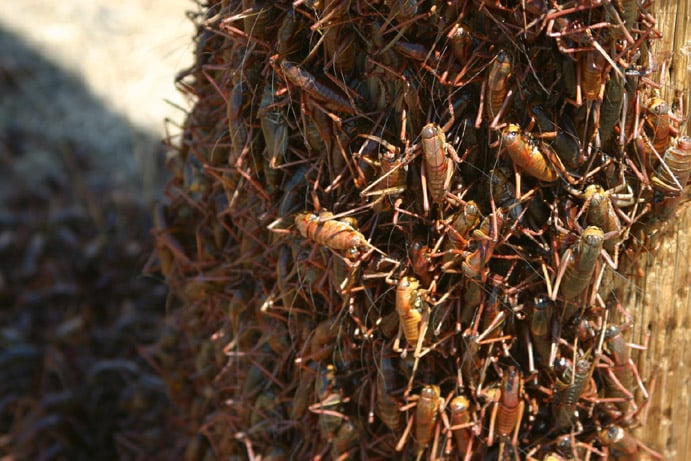CASPER, Wyo. — In June, Edgerton, Wyo., experienced a swarm of thousands of Mormon crickets. Luckily, they’ve moved onto rangeland and out of people’s way, but it’s still important to understand that this situation could have been much worse.
Bruce Shambaugh, the state plant health director for Wyoming, in the U.S. Department of Agriculture’s Animal and Plant Health Inspection Service, indicated from a 2022 survey that estimated Converse and Natrona counties would have a cricket hotspot this year, among a few other counties across the state.
With this infestation, the crickets are present in larger-than-normal densities. But not so many that they are a real danger. A big outbreak is always possible and being near crops would have been a different story for this surge.
“Grasshoppers and Mormon crickets can cause serious economic losses to agricultural resources,” Shambaugh stated. “Impacts vary by county, but in hardest hit areas, it is possible to see heavy defoliation and lack of forage in rangelands, and significant damage to croplands.”
The crickets are expected to mate in the next two to three weeks and die shortly after. In the meantime, Natrona County Weed and Pest, Converse County Weed and Pest, and APHIS are closely monitoring the situation and treating the outbreak.
“This type of stuff doesn’t happen every year, but it’s fairly awe-inspiring when you see it,” said Matt Jolivet, supervisor for the Natrona County Weed and Pest. “We have the tools and resources to treat them, especially when it comes to human health and safety.”
Jolivet mentioned that there’s a lot of variability in treating these outbreaks, especially when it comes to the land use of areas affected.
A CHALLENGING EFFORT
One big challenge with Mormon cricket outbreaks is that these pests can band together, migrate up to a mile a day, and change directions without any reason. But communication is always key when dealing with these sorts of infestations.
“With the help of USDA APHIS and informed landowners, the treatment in Converse County worked really well,” said Jess Butler, assistant supervisor for Converse County Weed and Pest.
“Luckily, every county in Wyoming has a Weed and Pest District to make a successful management plan for any threat that might come our way,” Butler said.
With the potential for much worse outbreaks of Mormon crickets and grasshoppers across the state, funding for these emergencies needs to be consistently available instead of rushing to find available funds.
“Weed and pest districts do a great job of trying to plan for outbreaks like this, but controlling big outbreaks can get really expensive really quickly,” said Lindsey Woodward, weed and pest program coordinator for the Wyoming Department of Agriculture.
“A lot of this infestation is on federal land. Funding an outbreak like this on the fly is difficult because of the long process partners like APHIS have to go through to plan and be approved to put dollars on the ground,” Woodward stated.
Contact your local weed and pest district for help or information about outbreaks.
###
Wyoming Weed and Pest Council


